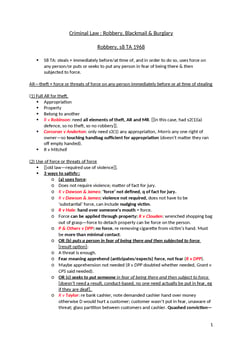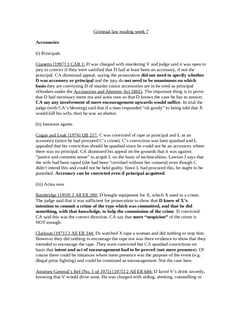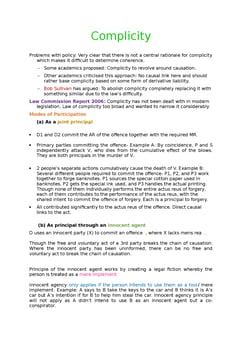R v Barnes [2005] Crim LR 381
Judgement for the case R v Barnes
Table Of Contents
KEY POINTS
Consent is a critical factor in this legal matter, influencing the evaluation of the defendant's actions. The case is linked to organized sports, which has implications for its legal aspects, particularly in considering standard practices and rules.
The legal context sets a specific threshold for determining criminal conduct in this case. The defendant's participation in an amateur football match is central to the case, possibly involving injury to another player.
The case raises a question regarding whether the defendant's actions meet the criteria for criminal conduct. The case may involve relevant statutes or laws, such as the Offences Against the Person Act 1861, Section 20, which could impact the legal proceedings.
FACTS
During an amateur football match, the defendant injured another player with a tackle, leading to a serious leg injury. The defendant faced trial for unlawfully and maliciously causing grievous bodily harm under Section 20a of the Offences Against the Person Act 1861.
In the trial, the prosecution argued the injury resulted from the defendant's recklessness, while the defendant claimed it was an accidental outcome of a fair challenge during regular play.
The judge stressed that a guilty verdict required proof that the incident wasn't part of a 'legitimate sport.' The prosecution argued the defendant's actions were so reckless they couldn't be deemed legitimate, akin to an assault.
The defendant was convicted, prompting an appeal that centered on the judge's jury instructions.
The Court of Appeal examined when criminal proceedings can follow injuries in sports, the defense of consent, and the threshold for criminality in such cases.
JUDGEMENT
Criminal prosecution should be reserved for serious conduct that qualifies as criminal. Most organized sports have their own disciplinary procedures, making criminal proceedings unnecessary and undesirable. Injured players can seek damages in civil actions for injuries resulting from negligence or assault.
The general rule is that victim consent is irrelevant when bodily harm occurs, except for certain exceptions based on public policy. In contact sports, implicit consent to the risk of physical injury applies. There's no need for a separate legal basis for this defense. Conduct exceeding reasonable expectations in the sport falls outside the defense.
The criminal threshold depends on circumstances. Play within the rules and customary for the game is generally not criminal. In highly competitive sports, rule-breaking in the heat of the moment may not meet the criminal threshold, even if it leads to penalties or ejections. Factors like sport type, level, act nature, force, injury risk, and defendant's state of mind matter. Some cases fall into a "grey area," requiring fact-finders to decide.
In cases like this, unclear jury guidance on defining "legitimate sport" rendered the summing-up inadequate. Thus, the conviction is unsafe, and the appeal is allowed.
COMMENTARY
During an amateur football match, the defendant injured another player, leading to a trial under Section 20a of the Offences Against the Person Act 1861. The prosecution argued recklessness, while the defendant claimed it was an accidental challenge.
The judge stressed that guilt hinged on the act not being part of 'legitimate sport.' The Court of Appeal later determined that criminal prosecution should be reserved for severe conduct, with sports having their own disciplinary procedures.
Injuries in contact sports may involve implicit consent to risk. The criminal threshold depends on factors like sport type and the defendant's state of mind.
The unclear guidance in this case rendered the conviction unsafe, resulting in a successful appeal.
ORIGINAL ANALYSIS
A footballer tackled another one in such a way that he caused serious injury to Victim’s leg.
The judge directed that if the tackle had not been done by way of legitimate sport, then he could be convicted of GBH (grievous bodily harm). He was convicted.
CA allowed his appeal on the grounds that most sports had their own disciplinary procedures and that in the heat of the moment it was quite possible to go beyond the rules.
The jury would need to ask themselves, among other questions, whether the contact was so obviously late and/or violent that it could not be regarded as an instinctive reaction, error or misjudgment in the heat of the game.
If a player was to bring criminal proceedings, then the harm they suffered would have to be above and beyond what they would normally expect to suffer during the course of a game.
For Further Study on R v Barnes

A collection of the best GDL notes the director of Oxbridge Notes (an O...

Criminal Law notes fully updated for recent exams at Oxford and Cambrid...
Need instant answers? Our AI exam tutor is here to help.
Ask questions 🙋 Get answers 📔 It's simple 👁️👄👁️
Our AI is educated by the highest scoring students across all subjects and schools. Join hundreds of your peers today.
Get StartedRelated Product Samples
These product samples contain the same concepts we cover in this case.

 Since 2010, Oxbridge Notes has been a trusted education marketplace, supplying high-quality materials from top achievers at universities like Oxford, Cambridge, LSE, Harvard, and Yale.
Since 2010, Oxbridge Notes has been a trusted education marketplace, supplying high-quality materials from top achievers at universities like Oxford, Cambridge, LSE, Harvard, and Yale.